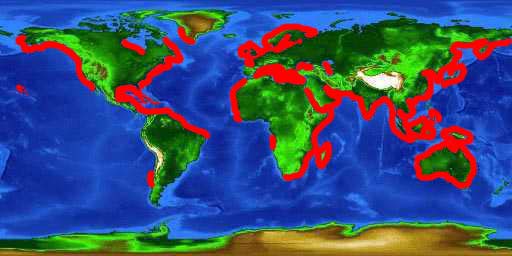Worldwide
There are over 55 species of seagrass worldwide.
Over 55 seagrass species exist throughout the world, with over half of these occurring off the coast of Australia. Within the U.S., 90% of all seagrasses are found in the Gulf of Mexico. Off the coast of Florida, there are seven species of seagrasses with turtle grass (Thalassia testudinum) the most abundant.

Florida
The most extensive seagrass community in the world is off south Florida.
The seagrass meadows of south Florida are the most extensive in the world, covering more than 2,120 square miles (5,500 square km). This community is within an area surrounded by Cape Sable, north Biscayne Bay, and the Dry Tortugas, including Florida Bay and the Florida Keys. Turtle grass (Thalassia testudinum), manatee grass (Syringodium filiforme), and shoal grass (Halodule wrightii) are the most abundant seagrass species throughout the Florida Keys. North of this area, along the Atlantic coast, shifting sand and wave energy prevents the establishment of large seagrass meadows. Rather, seagrasses are found in small patches within protected areas. On the coast of the Gulf of Mexico, north of Cape Sable, seagrasses are uncommon due to lower salinity levels from mixing of seawater with freshwater runoff from the Everglades. In locations north of Tarpon Springs, seagrass communities occur on the continental shelf along the northern Gulf of Mexico.
Seven species of seagrass are found in Florida’s coastal waters